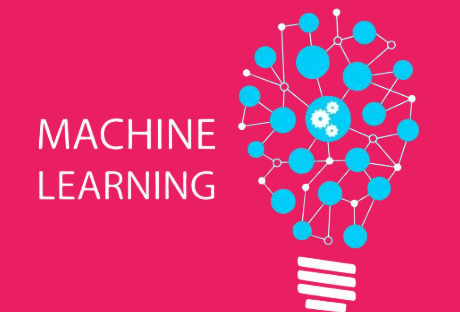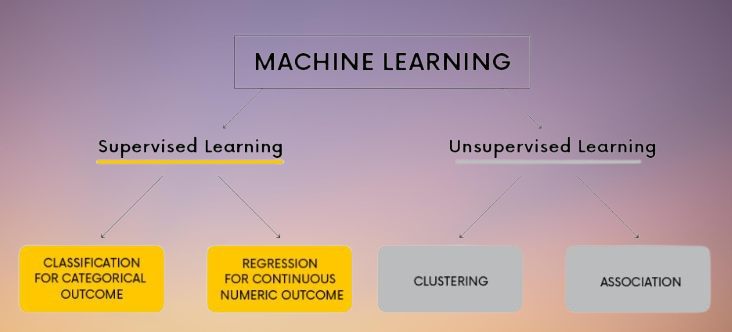Top Machine Learning Algorithms You Need to Know in 2025: A Complete Guide for Beginners & Experts
Hello Guys, we welcome you to Machine Leaning all in one information blog in which we will tell you about all the uses of Machine Learning or how you use it or where it is used along with some important facts. Will also be mentioned or if you have any questions regarding this topic then you can comment with us. You can also contact us through our contact form so that we can answer your questions. let's start

Introduction to Machine Learning:
Machine Learning (ML) is a technology that gives computers the ability to learn and make decisions from data, without having to program explicitly. That is, in traditional programming we give exact instructions to the computer, whereas in ML the computer understands its own patterns and trends and uses them. Machine learning algorithms evolve with time, that is, as they get more data, they become more accurate. The main aim of ML is to teach the computer to improve from its experience, which ultimately helps to automate all types of tasks and make it more efficient. This technology is being used in every field like healthcare, finance, entertainment, education, etc.
Machine Learning in Daily Routine:
Smartphones:
Machine learning plays a significant role in the features that your smartphone has. For example, your phone learns your typing habits and improves the predictive text feature. Your phone also learns which apps you use at what time and optimizes battery usage accordingly. If your phone has facial recognition, that too works with the help of machine learning. Your phone helps you unlock your phone by analyzing the features of your face.
Social Media:
Social media platforms like Facebook, Instagram, and Twitter also use machine learning. These platforms analyze your activity, likes, shares, and comments, and show you personalized content. For example, if you mostly view travel posts on Instagram, the platform will recommend similar travel content to you. These algorithms understand your habits, engage you, and encourage you to spend more time.
Navigation Apps:
Navigation apps like Google Maps, Apple Maps, and Waze use machine learning to predict traffic conditions and best routes. These apps track your location and monitor nearby traffic, accidents, and roadblocks. When you set a route, the app recommends the fastest and safest route based on its data and real-time traffic information. If there is a traffic jam, the app automatically updates the route, which enhances the user experience.
E-Commerce:
E-commerce websites such as Amazon, Flipkart, and eBay also use machine learning. The products recommended to you on these platforms are based on your past browsing and purchasing history. If you see some shoes, you will be recommended similar shoes or accessories. These recommendation systems understand the user's interests and provide targeted and personalized suggestions, which makes the shopping experience seamless and engaging.
Machine learning is hidden around us every day and is making our daily routine more convenient, personalized, and efficient.
Machine Learning Algorithms: Detailed Explanation
Here I will explain machine learning algorithms in a little detail including purpose of each algorithm, its use case and working process.

Supervised Learning Algorithms
In supervised learning, we provide the algorithm with labeled data (input-output pairs) so that the algorithm can make future predictions
- Linear Regression
- Purpose: Continuous target variable (output) predict.
- Use Case: Price prediction, sales forecasting.
- How it works: Linear regression finds a linear relationship between the input features and the output and draws a straight line that best fits the data.
2. Logistic Regression
- Purpose: Binary classification (yes/no, true/false).
- Use Case: Spam email detection, customer churn prediction.
- How it works: Logistic regression uses the sigmoid function which gives a probability output (from 0 to 1), and uses it to classify.
3.Decision Trees
- Purpose: Classification aur regression.
- Use Case: Disease diagnosis, loan approval.
- How it works: A decision tree splits the dataset at multiple decision points and makes predictions after reaching the leaves of the tree.
4.Support Vector Machines (SVM)
- Purpose: Classification problems (both linear and non-linear).
- Use Case: Face recognition, image classification.
- How it works: SVM the best hyperplane to divide the data into distinct classes that maximizes the margin (distance between data points)
5.K-Nearest Neighbors (KNN)
- Purpose: Classification and regression.
- Use Case: Recommender systems, image classification.
- How it works: Classifies new data points based on their nearest neighbors.
- Naive Bayes
- Purpose: Classification, specially for probabilistic models.
- Use Case: Spam filtering, sentiment analysis.
- How it works: Naïve Bayes uses the Bayes theorem and assumes that features are independent .
- Random Forest
- Purpose: Ensemble learning (multiple decision trees).
- Use Case: Fraud detection, customer segmentation.
- How it works: Multiple decision trees are created, each tree uses a random subset of the data and combines their results to give the final prediction.
- Gradient Boosting Machines (GBM)
- Purpose: Boosting method for prediction.
- Use Case: Predictive modeling, stock market prediction.
- How it works: GBM trains weak models (typically decision trees) sequentially, with each new model correcting errors in previous models.
- AdaBoost (Adaptive Boosting)
- Purpose: Boosting to improve weak classifiers.
- Use Case: Image recognition, object detection.
- How it works: AdaBoost combines learners sequentially and focuses more on samples that were previously predicted incorrectly.
- XGBoost
- Purpose: Advanced Gradient Boosting.
- Use Case: Kaggle competitions, customer churn prediction.
- How it works: Qgboost uses decision trees and optimizes gradient boosting.
- LightGBM
- Purpose: Faster and more efficient gradient boosting.
- Use Case: Big data applications, ranking tasks.
- How it works: LightGBM large datasets ko efficiently handle karta hai aur parallel computation ka use karta hai.
- CatBoost
- Purpose: Gradient boosting with categorical features.
- Use Case: Business prediction, fraud detection.
- How it works: Lightning handles large data sets efficiently and uses parallel computation.
2. Unsupervised Learning Algorithms
In unsupervised learning we do not give labeled data, there is just input data. The algorithm automatically identifies patterns or structures.
- K-Means Clustering
- Purpose: Clustering (grouping similar data points).
- Use Case: Customer segmentation, market research.
- How it works: K-means divides the data into k clusters, each cluster having its own centroid .
- Hierarchical Clustering
- Purpose: Create a tree of clusters.
- Use Case: Gene expression analysis, document clustering.
- How it works: Clusters data points hierarchically, where each cluster is recursively merged with its similar clusters .
- DBSCAN (Density-Based Spatial Clustering of Applications with Noise)
- Purpose: Find clusters based on density.
- Use Case: Anomaly detection, geospatial clustering.
- How it works: DBSAN identifies high-density regions and treats low-density regions as noise .
- Gaussian Mixture Models (GMM)
- Purpose: Soft clustering.
- Use Case: Anomaly detection, speech recognition.
- How it works: GMM models data via multiple Guassian distributions and provides soft clustering.
- Principal Component Analysis (PCA)
- Purpose: Dimensionality reduction.
- Use Case: Data visualization, feature extraction.
- How it works: It projects your high-dimensional data into a lower-dimensional space while retaining most of the variance .
- Independent Component Analysis (ICA)
- Purpose: Extract independent components from signals.
- Use Case: Audio signal separation, blind source separation.
- How it works: ICA separates data into uncorrelated independent components .
- t-SNE (t-Distributed Stochastic Neighbor Embedding)
- Purpose: Dimensionality reduction for visualization.
- Use Case: Data visualization for high-dimensional datasets.
- How it works: t-SNE projects data into 2d/3d space, with similar points being closely clustered .
- Self-Organizing Maps (SOM)
- Purpose: Neural network-based clustering.
- Use Case: Image compression, pattern recognition.
- How it works: SOM maps the data onto a 2D grid where similar data points are clustered .
- Autoencoders
- Purpose: Feature learning and dimensionality reduction.
- Use Case: Image denoising, anomaly detection.
- How it works: Autoencoders use neural networks to compress (encode) and reconstruct (decode) data .
3. Reinforcement Learning Algorithms
In reinforcement learning the agent interacts with its environment and optimizes its actions based on rewards/penalties.
- Q-Learning
- Purpose: Learn optimal actions using reward feedback.
- Use Case: Game AI, robotics.
- How it works: Q-learning helps agents learn optimal actions through reward functions .
- Deep Q-Networks (DQN)
- Purpose: Q-learning ka deep learning version.
- Use Case: Complex environments like video games.
- How it works: DQN combines Q-learning with deep neural networks .
- Monte Carlo Methods
- Purpose: Learn from average rewards.
- Use Case: Game playing, simulation-based decision making.
- How it works: Monte Carlo methods estimate rewards using random sampling .
- Policy Gradient Methods
- Purpose: Directly optimize the policy function.
- Use Case: Robotic control, game AI.
- How it works: Policy gradients directly optimize action strategies .
- Deep Deterministic Policy Gradient (DDPG)
- Purpose: Deep reinforcement learning for continuous actions.
- Use Case: Robotics, autonomous vehicles.
- How it works: DDPG helps to learn optimal actions in continuous action spaces using deep learning models .
- Proximal Policy Optimization (PPO)
- Purpose: Improve stability in training reinforcement learning models.
- Use Case: Complex environments (like robotics, games).
- How it works: PPO trains the agent efficiently and prevents overfatigue .
- Trust Region Policy Optimization (TRPO)
- Purpose: Improve policy optimization.
- Use Case: Robotics, game AI.
- How it works: TRPO makes training stable and efficient by limiting changes in the policy.
4. Specialized Algorithms
- Neural Networks (Deep Learning)
- Purpose: Complex pattern recognition tasks.
- Use Case: Image recognition, language translation.
- How it works: Neural networks process data using multiple layers of neurons .
- Hidden Markov Models (HMM)
- Purpose: Model sequential data.
- Use Case: Speech recognition, stock market prediction.
- How it works: HMM models the hidden states of sequential data .
- Factorization Machines (FM)
- Purpose: Generalize matrix factorization techniques.
- Use Case: Recommendation systems.
- How it works: The FM handles large touch data sets efficiently .
- Extreme Learning Machines (ELM)
- Purpose: Fast learning using single-layer networks.
- Use Case: Pattern recognition, image processing.
- How it works: ELM is designed for fast training times and efficiently processes complex data.
Summary:
This list arranges the most popular machine learning algorithms into categories. The algorithms in each category have their own use case:
Supervised learning algorithms work on labeled data.
Unsupervised learning algorithms find the hidden structure of data without labels.
Reinforcement learning algorithms are used for decision-making tasks where the agent receives feedback.
Specialized algorithms are used for advanced tasks such as image processing, sequence prediction, and complex pattern recognition.
Thus, understanding machine learning algorithms and choosing their appropriate use case helps you select the most suitable model for your data and problem.
